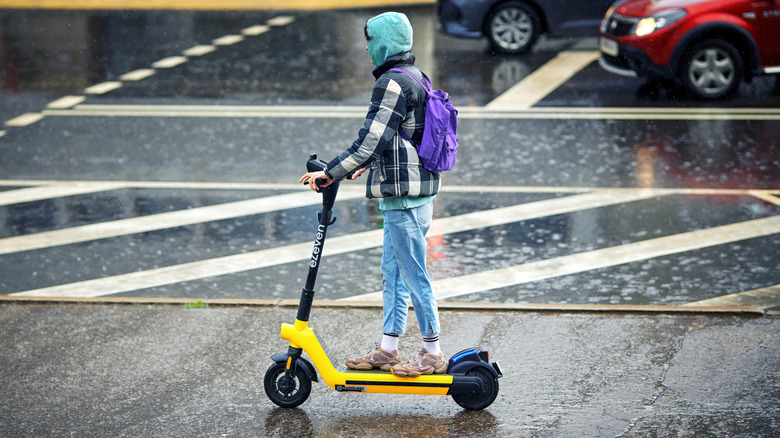Are Electric Scooters Waterproof? (And Can You Ride Them In The Rain?)
With its small size and light weight, a motorized electric scooter is a convenient way to travel around urban areas. Motorized electric scooters refer to two distinct types of transport: the standing scooter or the moped, which looks like a small motorcycle, just like the very cool-looking Honda Ruckus. Both versions are electric-powered, and some models are usable in the rain because of limited water resistance. However, these are not fully waterproof.
To understand why some scooters can be used in the rain, it's important to know the difference between waterproof and water-resistant. Waterproof implies that an object is impregnable to water, while water-resistant means it has a degree of protection against water intrusion. Scooters with water resistance have some of their parts — including batteries, connectors, and other sensitive electrical components — shielded or sealed as protection from potential water exposure.
The degree to which some scooters can be exposed to water or rain is based on their IP, or Ingress Protection Rating, which indicates their dust and water resistance capacity. The IP rating for scooters is composed of two digits, with the first digit indicating the dust resistance level and the second digit for water resistance. Scooters with an IP rating of at least 54 can be used in light rain, while those with higher IP ratings, such as IP66, can be driven even during a stronger downpour and across shallow pools of water for a limited time.
Water resistance based on IP rating
Despite several misconceptions about their durability and speed, the best scooters are actually quite robust, with one model being quicker than a Tesla. To ensure a scooter is capable of withstanding rain exposure, verifying its IP rating is essential. However, even if a scooter is IP-rated for water exposure, using it during wet weather or subjecting it to too much water may still damage the scooter or render it inoperable. This is because, for scooters with lower IP ratings, while a light shower is tolerable, their wheel type may not be suited to the slippery road conditions. Some parts are also more vulnerable to rain, such as displays and wiring, which can lead to short circuits. Repeated water subjection can also degrade rubber seals and corrode metal sections.
Aside from damaging the scooter, a more important consideration is the safety of its user. Rain can affect braking ability, impacting how quickly and how far a scooter needs to stop. Additionally, if it's a standing scooter, the board may not provide enough grip while wet, affecting the user's balance. Rain also impairs visibility, which is hazardous to the scooter user and others on the road. If it's necessary to use the scooter in the rain, using safety gear, including helmets and jackets, should be a priority.

